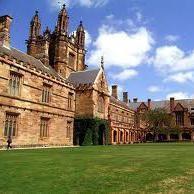By a theorem of Johansson, every triangle-free graph $G$ of maximum degree $\Delta$ has chromatic number at most $(C+o(1))\Delta/\log \Delta$ for some universal constant $C > 0$. Using the entropy compression method, Molloy proved that one can in fact take $C = 1$. Here we show that for every $q \geq (1 + o(1))\Delta/\log \Delta$, the number $c(G,q)$ of proper $q$-colorings of $G$ satisfies $c(G, q) \,\geq\, \left(1 - \frac{1}{q}\right)^m ((1-o(1))q)^n$, where $n = |V(G)|$ and $m = |E(G)|$. Except for the $o(1)$ term, this lower bound is best possible as witnessed by random $\Delta$-regular graphs. When $q = (1 + o(1)) \Delta/\log \Delta$, our result yields the inequality $c(G,q) \,\geq\, \exp\left((1 - o(1)) \frac{\log \Delta}{2} n\right)$, which implies the optimal lower bound on the number of independent sets in $G$ due to Davies, Jenssen, Perkins, and Roberts. An important ingredient in our proof is the counting method that was recently developed by Rosenfeld. As a byproduct, we obtain an alternative proof of Molloy's bound $\chi(G) \leq (1 + o(1))\Delta/\log \Delta$ using Rosenfeld's method in place of entropy compression.
翻译:根据约翰森的理论,每个没有三角的图形$G$, 最大程度为$Delta$, 以(C+o(1))\Delta/\log\Delta$的色数最多为$(C+o(1))\Delta/Delta$, 一些通用常数$C > 0美元。 使用 entropy 压缩方法, Molloy 证明, 一个人实际上可以花费$C=1美元。 这里我们显示, 对于每美元\geq(1+o(1))\Delta/ log$, 美元(G,q)$(美元, 美元, 美元, 美元, 美元, 美元, 美元, 美元, 美元, 美元, 美元, 美元, 美元, 美元。




